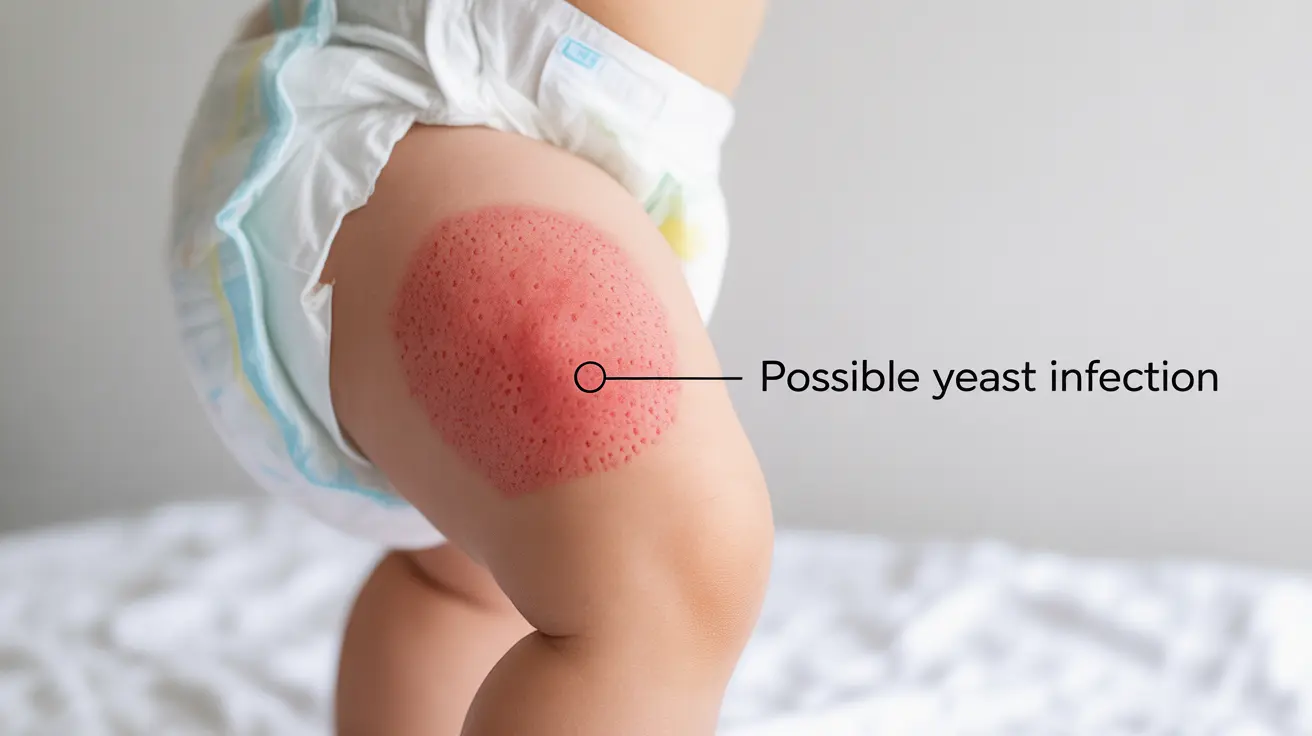When your baby's diaper rash persists despite your best efforts at treatment, it can be both frustrating and concerning. Understanding why some diaper rashes won't go away and knowing the right steps to take can help you effectively address this uncomfortable condition and restore your baby's comfort.
In this comprehensive guide, we'll explore the common causes of stubborn diaper rash, identify warning signs that require medical attention, and discuss proven treatment strategies to help your little one heal.
Common Causes of Persistent Diaper Rash
Several factors can contribute to a diaper rash that won't go away, even with regular care and attention:
Yeast Infections
One of the most common culprits behind persistent diaper rash is a fungal infection caused by Candida yeast. These infections often appear as bright red patches with distinct borders and small red spots around the main rash area.
Bacterial Infections
Sometimes, bacteria can enter through broken skin, causing a secondary infection that prevents healing. Signs include increased redness, swelling, and possible yellow or cloudy drainage.
Allergic Reactions
Your baby might be reacting to ingredients in diapers, wipes, lotions, or laundry detergents. These reactions can cause ongoing irritation that persists until the allergen is identified and removed.
Identifying a Yeast Infection
Yeast infections require specific treatment and can be identified by these characteristics:
- Bright red, slightly raised rash
- Small red dots surrounding the main rash area
- Rash that doesn't improve with standard diaper cream
- Patches in skin folds and creases
When to Seek Medical Care
Contact your healthcare provider if your baby's diaper rash:
- Persists for more than 3-4 days despite home treatment
- Shows signs of infection (fever, bleeding, oozing)
- Causes significant pain or discomfort
- Spreads beyond the diaper area
Treatment Options for Stubborn Diaper Rash
Over-the-Counter Solutions
For persistent rashes, consider these treatment options:
- Antifungal creams (if yeast is suspected)
- Zinc oxide-based barrier creams
- Gentle, fragrance-free moisturizers
- Hypoallergenic baby wipes or plain water for cleaning
Prescription Treatments
Your doctor might recommend:
- Prescription-strength antifungal medications
- Mild steroid creams for inflammation
- Antibiotic ointments if bacterial infection is present
Prevention Strategies
To prevent recurring diaper rash:
- Change diapers frequently
- Allow diaper-free time for skin to breathe
- Use gentle, fragrance-free products
- Apply barrier cream at every diaper change
- Ensure proper diaper fit to prevent chafing
Frequently Asked Questions
What are the most common causes of diaper rash that won't go away despite home care?
The most common causes include yeast infections, bacterial infections, allergic reactions to products, and sensitivities to foods in nursing mothers' diets or formula. Continuous moisture and friction can also contribute to persistent rash.
How can I tell if my baby's persistent diaper rash is caused by a yeast infection?
A yeast infection typically appears as a bright red, raised rash with defined borders and satellite spots around the main area. It's often found in skin folds and doesn't respond to regular diaper cream.
When should I see a doctor if my baby's diaper rash does not improve or worsens?
See a doctor if the rash persists for more than 3-4 days, shows signs of infection, causes severe discomfort, or spreads beyond the diaper area. Also seek medical care if your baby develops a fever or the skin begins bleeding or oozing.
What treatments are available for stubborn diaper rash that does not get better with typical diaper changes and ointments?
Treatment options include antifungal creams, prescription-strength steroid creams, antibiotic ointments for bacterial infections, and specialized barrier creams. Your doctor can determine the most appropriate treatment based on the type and severity of the rash.
How can I prevent diaper rash from recurring or becoming chronic in my baby?
Prevent recurring rash by changing diapers frequently, allowing skin to dry completely, using protective barrier cream, choosing gentle products, and providing diaper-free time. Also consider potential allergies to products or dietary sensitivities.




